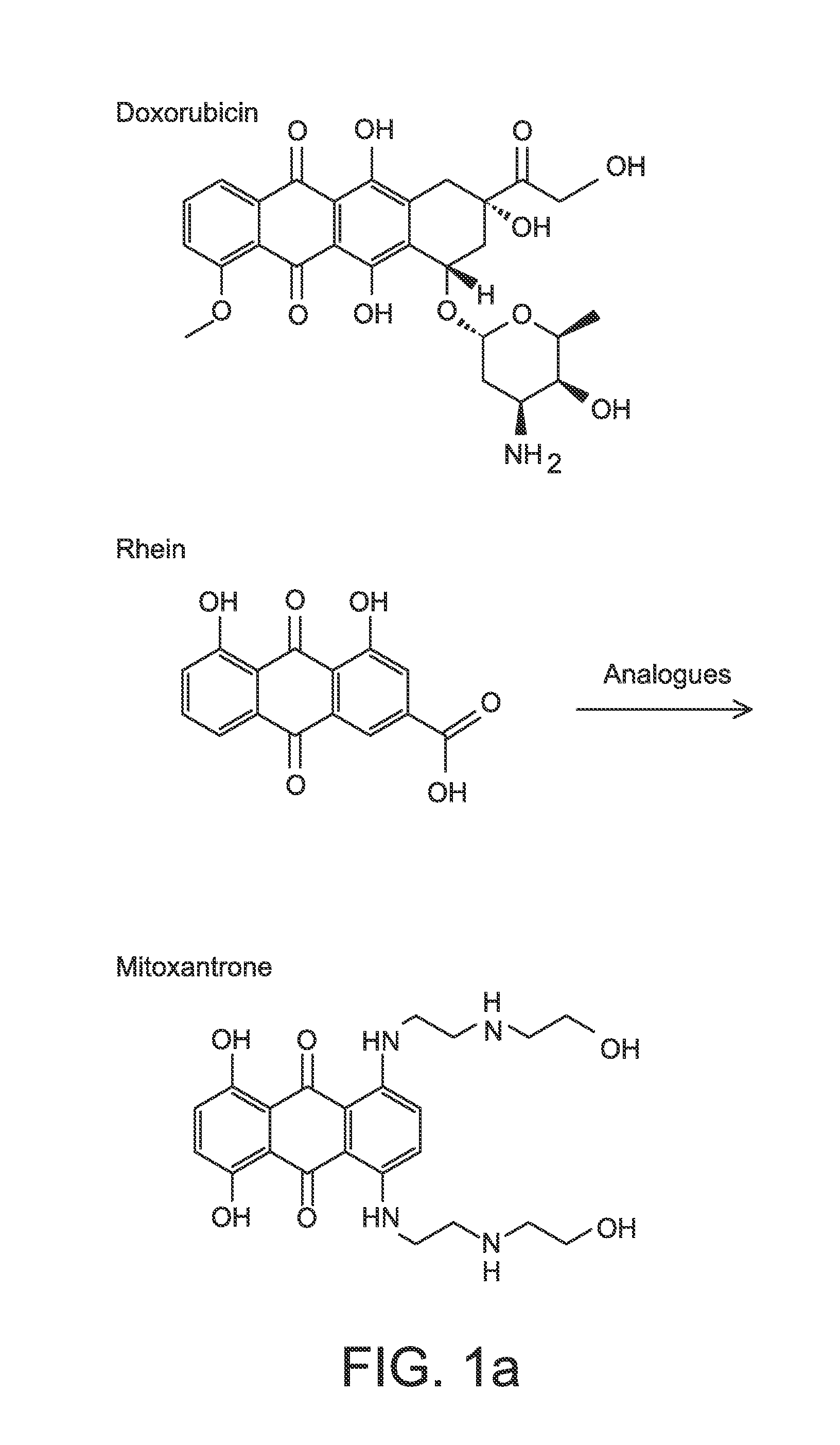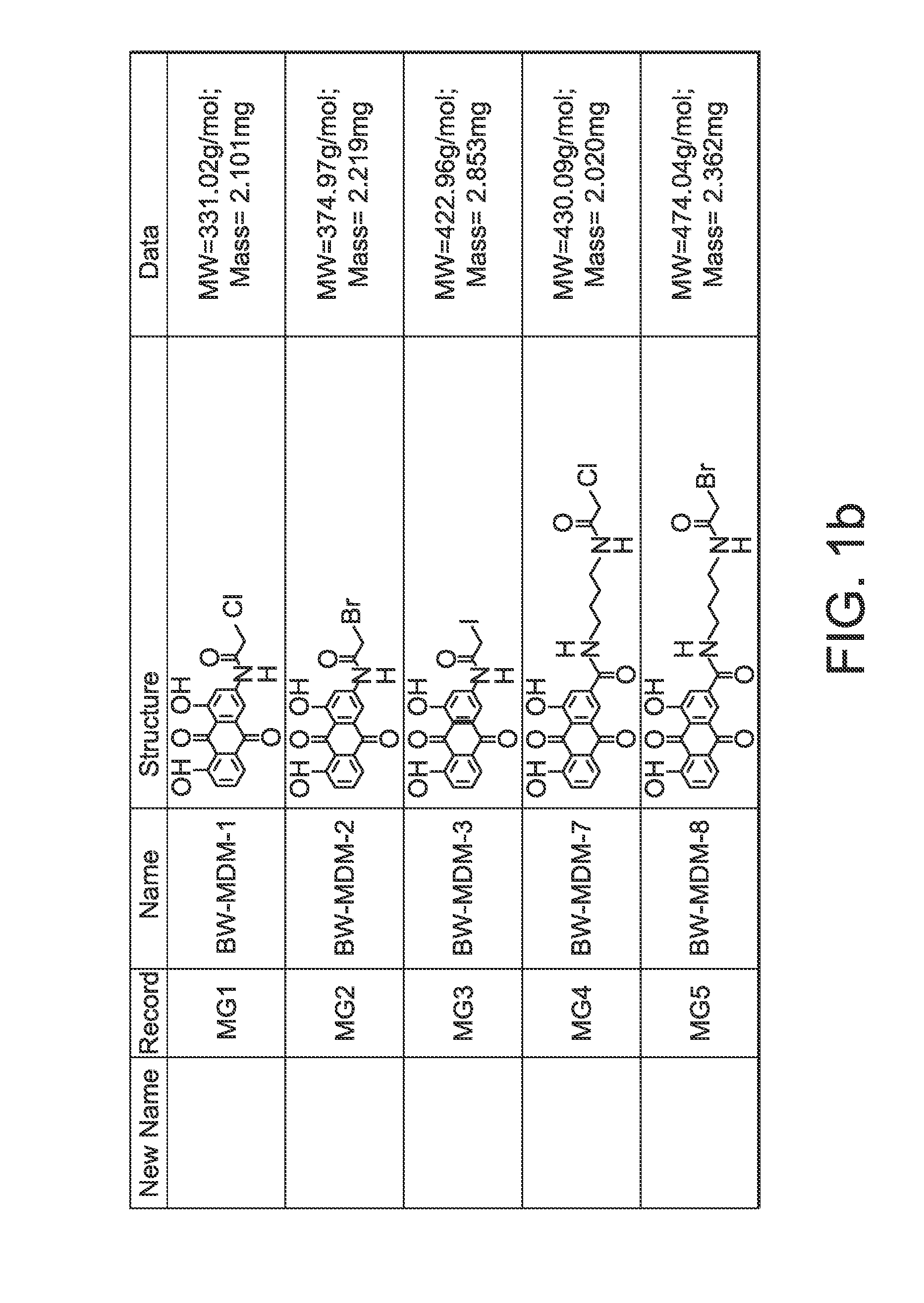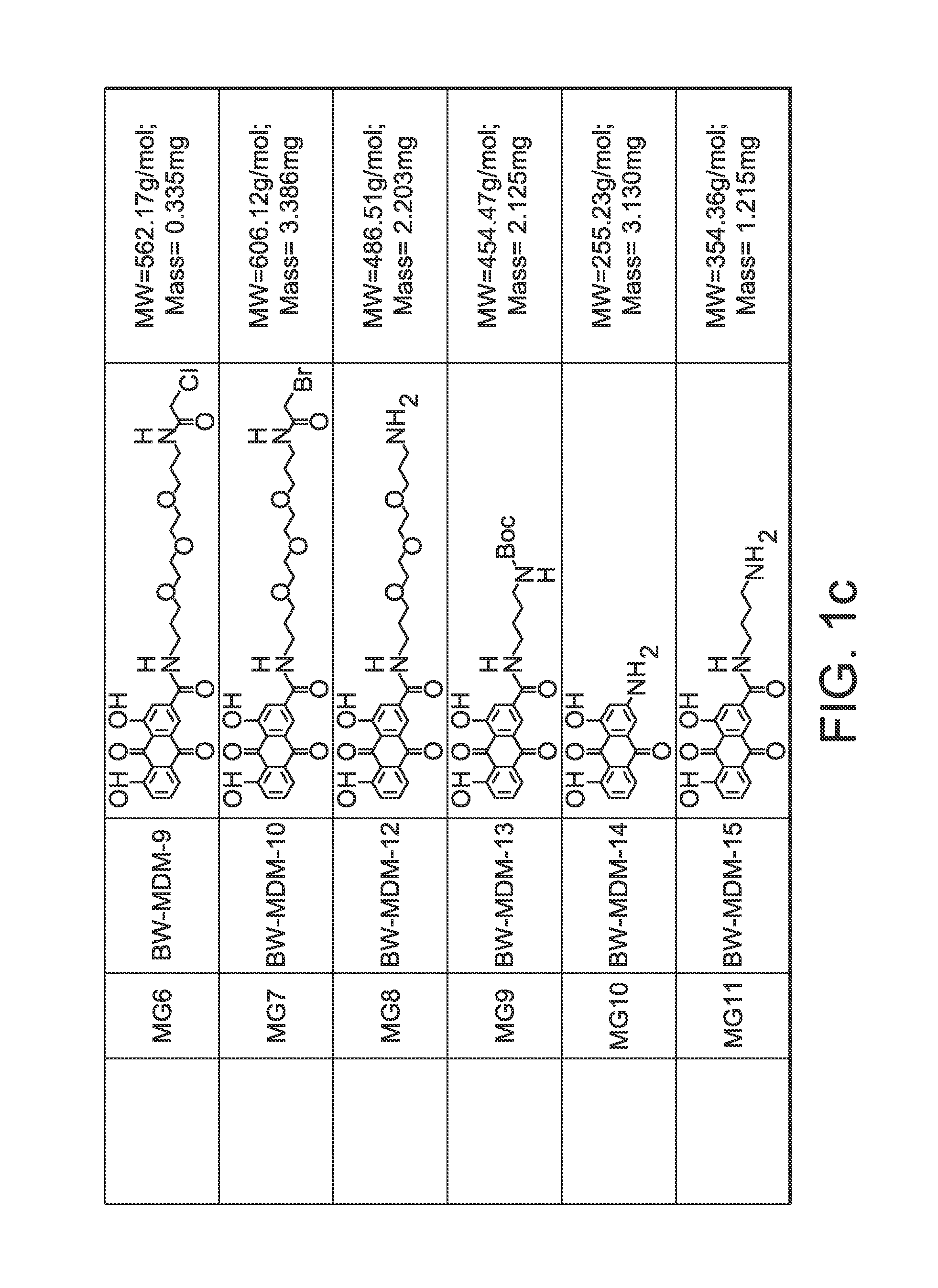Anthraquinone Analogs and Methods of Making and Using Thereof
anthraquinone analog and anthraquinone technology, applied in the field of rhein analogs, can solve the problems of cell apoptosis and serious cardiotoxicity side effects
- Summary
- Abstract
- Description
- Claims
- Application Information
AI Technical Summary
Benefits of technology
Problems solved by technology
Method used
Image
Examples
example 1
Synthesis of 1,8-dihydroxy rhein analogs
Synthesis of 1,8-Dihydroxy-3-amino-anthraquinone (3)
[0260]Compound 1 (500 mg, 1.7 mmol) was suspended in anhydrous dimethyl formamide (DMF, 6 mL) in a dry round bottom flask and cooled to 0° C. Triethyl acetic acid (TEA) (490 μL, 3.5 mmol) was added at 0° C. Diphenylphosphoryl azide (DPPA, 400 μL, 1.8 mmol) was added drop wise after 1 was completely dissolved. The reaction mixture was stirred at room temperature for 20 minutes. TLC (hexanes:ethyl acetate=3:1) showed complete consumption of the starting material. The solvent was evaporated in vacuo and the obtained oil was purified by silica gel column chromatography using a mixture of hexanes and ethyl acetate in a 2:1 ratio as the eluent. 200 mg of a brown-yellow powder was obtained.
[0261]Compound 2 was dissolved in 1,4-dioxane (4 mL) and stirred under reflux for 2 hours. After the color of the solution turned from brown to bright red, TLC (hexanes:ethyl acetate=2:1) showed product formation....
example 2
Synthesis of 1,8-dimethoxy rhein analogs
1,8-dimethoxy-3-(2′-chloro-acetamido)-anthraquinone (12)
[0289]Chloroacetyl chloride (21 μL, 0.2 mmol) was injected slowly into the solution of (11) (50 mg, 0.17 mmol) in anhydrous 1,4-dioxane (5 mL). The mixture was stirred at room temperature for 2 h. The reaction was followed by TLC (DCM:MeOH=10:1), and after completion was diluted by H2O (20 mL) and the suspension was extracted with CH2Cl2 (2×50 mL). The organic layers were combined, dried over MgSO4, filtered and concentrated in vacuo. The residue was purified with silica gel column chromatography. It was eluted with DCM:MeOH (60:1). Orange color solid was obtained as product (8 mg, 30% yield). 1H NMR (DMSO-d6): δ 10.81 (s, 1H), 7.93 (d, 1H, J=2.0 Hz), 7.82 (d, 1H, J=2.0 Hz), 7.76-7.682 (m, 2H), 7.55-7.529 (m, 1H), 4.34 (s, 2H), 3.93 (d, 6H, J=7.6 Hz); MS: m / z [M+H]+ calculated C18H14ClNO5360.0, found 360.2.
1,8-dimethoxy-3-(2′-bromo-acetamido)-anthraquinone (13)
[0290]Bromoacetyl bromide (2...
example 3
MTT Assay
[0308]HeLa, Hek, and KB cell lines were purchased from ATCC. All of the cell lines were cultured in RPMI-1640 medium. The medium was supplemented with 10% fetal bovine serum and 1% penicillin / streptomycin. For the cytotoxicity assays, cells were seeded into 96-well plate (2.5×104 in 100 μL per well for HeLa, 3.0×104 for KB, and 5×104 for Hek). The compounds were dissolved or suspended in DMSO to make 10 mM stock solutions. The structures of the compounds tested are shown in FIG. 1. The stock solution was diluted using DMSO to various concentrations. 1 μL of each concentration was diluted 100 fold with medium into the well plate keeping the DMSO2, 10 μL of MTT (5 mg / mL in PBS) was added. After addition of MTT the cells were incubated for another 4 h. The culture medium was then aspirated and 100 μL of DMSO was added to each well. The 96-well plate was read by microarray reader for optical density at 490 nm. All tests were performed in triplicates and IC50 values were estimat...
PUM
| Property | Measurement | Unit |
|---|---|---|
| melting point | aaaaa | aaaaa |
| pH | aaaaa | aaaaa |
| pH | aaaaa | aaaaa |
Abstract
Description
Claims
Application Information
 Login to View More
Login to View More - R&D
- Intellectual Property
- Life Sciences
- Materials
- Tech Scout
- Unparalleled Data Quality
- Higher Quality Content
- 60% Fewer Hallucinations
Browse by: Latest US Patents, China's latest patents, Technical Efficacy Thesaurus, Application Domain, Technology Topic, Popular Technical Reports.
© 2025 PatSnap. All rights reserved.Legal|Privacy policy|Modern Slavery Act Transparency Statement|Sitemap|About US| Contact US: help@patsnap.com



